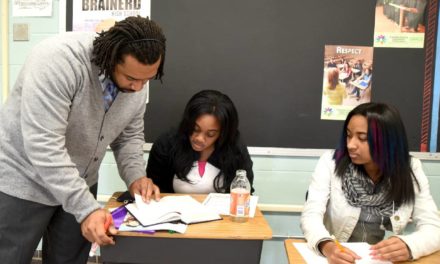
By: Marsha Lynn Hudson
To incorporate the cell phone or not… Is that really the question? In this digital arena, it can be the best of times or the worst of times. The addiction to technology has some benefits. When we think about teaching our digital addict students in this day and age, we must learn where and how to reach them. Students today are much different from the way they were 20 and even 10 years ago. What once worked in the classroom for instructors and professors does not work anymore. At one time, students would sit in a lecture for 60 or 90 minutes listen and take notes. The thought of falling to sleep in a lecture was unheard of and untolerated. If the professor wants to reach the 21st century student, different methods must be implemented. Teaching today’s digital addict students involve connections, collaborations, and communication.
In this digital arena, connections are vital when reaching today’s students. The professor must create a variety of ways to connect with the students. Students come from all walks of life, and the way to connect with one student can be different from connecting with another student. Connecting with students can be achieved through group activities that involve subjects that interest the students. Students can work in pairs and answer prompts that are related to their particular interests. One example of a prompt that interests’ students could be to ask them to write about texting and messaging and how these modes differ from writing letters or picking up the phone and talking.
When making connections with students, the instructor can use role playing where the students choose some of their favorite influencers online and discuss spending a day with those influencers. A third way of connecting with the digital addict students would be to break them up into teams and do an activity like speed dating. The students must write something related to Google, or YouTube and discuss how these two platforms contribute to making us lazy or more efficient. Then, after two minutes, they switch and move to the next student and that student responds. This activity goes on until each student has met with at least four other students.
The instructor sets the atmosphere for students to collaborate with each other. This digital world can cause so much isolation among students. Students are engaged with their phones, and their tablets leaving no room for collaborating with other students. Some good ways to encourage collaboration among students would be to have student to student interactions without involving the instructor. One good activity would be to put together a collection of questions maybe from a particular reading. Then, have the students answer the questions on their own and then respond to two other students. Students get to express their opinions and thoughts among each other. Creating an outlet for student responses help cut down on the isolation that today’s digital addict students can experience while only engaging with technology. When students collaborate with each other, they tend to retain information better because of the one-on-one interaction.

Communication is key when trying to reach today’s students. The instructor can struggle with communicating with students who are totally occupied with their phones, tablets, and other digital devices. To ensure that we don’t’ lose our students in this cycle where human interaction is almost null and void, we must create opportunities for communication. Some ways that we can keep students communicating with each other is to give them assignments that would call for open communication. One good activity would be to give students an assignment where students must work on a project together that doesn’t involve the cell phone or other digital devices. The students have to face each other and talk and discuss concepts. The students must write about these activities by hand. Research shows that writing and taking notes by hand helps student retention as opposed to recording notes on their phones or typing the notes.
The classroom today is filled with digital addict students, and instructors must find ways to make connections, collaborations and keep the communication lines open. Instructors must learn to connect with these students to keep the classroom a place of continuous learning. Collaboration between students must be a top priority in the classroom if we want to reach and teach today’s digital addict students. When the communication lines stay open, the atmosphere in the classroom becomes more conducive for learning. Teachers and students alike have a much more enjoyable experience in the classroom when we all meet in the middle. To incorporate the cell phone or not is not really the question. The question is do we meet the digital addict students where they are or not? I say yes. We must accept their digital addiction and learn to reach and teach.




